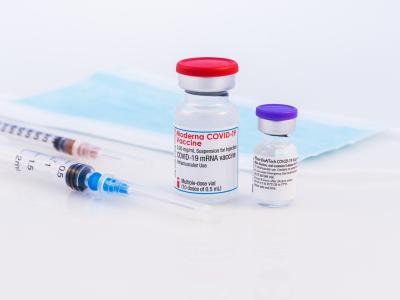As has been the trend over the last several weeks, the World Health Organization (WHO) confirmed a handful of new Ebola cases today in the ongoing outbreak in the Democratic Republic of the Congo's (DRC's) North and South Kivu and Ituri provinces.
Three new cases were recorded today on the WHO's Ebola dashboard, lifting the outbreak total to 3,197, including 2,136 deaths.
This is the DRC's largest Ebola outbreak since the virus was first discovered in that country in 1976. October marks the 14th month of active transmission in the DRC's far eastern region—home to millions of refugees as well as violent militia.
In addition to the new cases, 430 suspected cases are still under investigation, the WHO said. And today the DRC's multisector Ebola committee (CMRE) said the three cases recorded yesterday were in Oicha, Kalunguta, and Mandima.
Caution over drop in cases
In its weekly situation report on the outbreak, the WHO said yesterday that officials confirmed 20 new Ebola case in the past week and 12 death, but warned that the decrease in cases could be misleading.
"This perceived decrease in the number of cases should be interpreted with caution, as operational and security challenges in certain health zones make it difficult to undertake case detection and response functions. An increase in the number of reported cases is expected in the coming weeks once response activities resume in full," the WHO said.
There were no major security incidents reported in the past week, but response efforts in Lwemba, which is in Mambasa, remain delayed after a security incident took place there in early September.
"The lack of response activities for a full two weeks in Mandima Health Zone (Lwemba Aire de Santé) has resulted in a multitude of consequences, as it is likely that contacts are being lost to follow-up and new cases are not being reported. In Mambasa, delays in facilitating community involvement and providing engagement activities has resulted in community resistance and diminished response activities," the WHO said.
Female survivors face unique challenges
Overall, the WHO said in the past 21 days that 63% of Ebola transmissions occurred in social networks, and 7% were due to possible nosocomial transmission. At various points in this outbreak, nosocomial, or hospital-based, transmission has accounted for more than 10% of cases.
Women and girls account for 58% of the patients in this outbreak. A story yesterday from the WHO's Africa office said pregnant women who survive the outbreak are facing new challenges as they reintegrate into their communities.
Women are more likely to be caregivers in the DRC, and thus be exposed to sick family members, the WHO said. Now, with better treatments, pregnant women who contract the virus are surviving, as are their children. But they can face survivors' stigma.
The community can be reluctant to accept a baby born to an Ebola-infected woman, similar to how other survivors are treated, the story said.
Experimental Ebola, Marburg vaccines
In other news, the US Department of Health and Human Services (HHS) announced yesterday in a news release that it will support the simultaneous development of individual vaccine candidates against Marburg virus and Sudan ebolavirus infections.
The current Ebola outbreak is caused by the Ebola Zaire strain.
HHS will provide $20.5 million and technical expertise to the Albert B. Sabin Vaccine Institute Inc. of Washington, DC, which is working on the vaccines
The Sudan vaccine candidate is the first for this virus strain to receive BARDA support, and the Marburg vaccine candidate is the second for that disease, HHS said in the release. BARDA supports enhances US preparedness for the two viruses.
According to HHS, the most recent outbreaks of Marburg occurred in 2012, 2014, and 2017 in Uganda, with a case-fatality rate of 25%. The last Sudan ebolavirus outbreak also took place in Uganda, in 2012, killing 57% of people infected.
See also:
WHO online dashboard
Oct 1 CMRE update
Oct 1 WHO weekly situation report
Oct 1 WHO Africa story
Oct 1 HHS news release

















